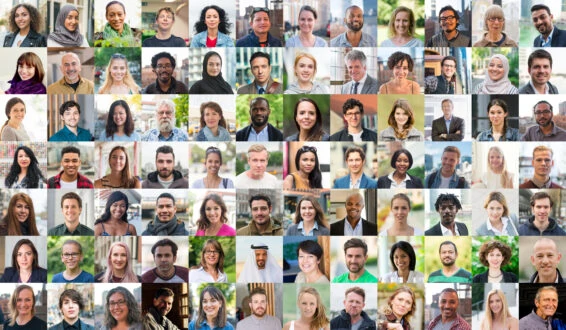Your Genesys Blog Subscription has been confirmed!
Please add genesys@email.genesys.com to your safe sender list to ensure you receive the weekly blog notifications.
Subscribe to our free newsletter and get blog updates in your inbox
Don't Show This Again.

Over the last 18 months, my colleagues and I have been building and implementing a diversity, equity and inclusion (DEI) practice at Genesys. The process of doing so turned out to be illuminating for me, particularly as it relates to inclusion during a global health crisis. We all want to see our families and friends safely, but we also want to see our colleagues. I wanted to include them — literally and physically — in what we were doing. But absent that possibility, our inclusion journey began and continued largely on video webinars.
Something was missing. And I couldn’t put my finger on it until recently, as we started to consider how to expand the reach of our DEI practice. It had grown somewhat organically, with inclusion groups forming of their own volition, but there was an unintended consequence. Over time, our practice became increasingly specific to the members of certain demographic groups who had come together to organize. Studying webinar logs showed us we had a solid cohort of extremely committed people attending our events and engaging with content. But it wasn’t nearly as universal (or global) as we would like. Did some people feel left out? Had our efforts to include people contained elements of bias themselves? Did our employees around the globe feel like our DEI efforts did enough to make them all feel treated equally? In the end analysis I had to conclude that we might not be doing enough.
Global inclusion is hard work. Our practice began with a response to US-centric issues, but now is the time to expand to a more global orientation. Where racial and cultural identification make for a logical point of entry in the US, other regions might need a different focus. Building a truly global practice calls for different thinking. We believe it requires a regionalized approach.
We had remarkable success building around inclusion for many our employees; however, a significant number might also have felt our efforts weren’t for them in some crucial way. Our goals must extend beyond race, ethnicity and gender to be truly inclusive. How do we create intentionality around inclusion, regardless of location, language, nationality, disability or a number of other differentiators?
The next phase of our journey starts with regionalization. Ours is a global company with offices (or a locational presence) in dozens of countries. Each of these locations has its own unique challenges and cultural nuances. That’s why I’m proud to say this month we are launching regional DEI councils to facilitate global inclusion and engagement. These councils can inform our efforts and help us build the practice in a way that acknowledges several truths that we might have missed on our first pass.
Sometimes, regional affinity might be more important than racial or cultural affinity — and we need to account for that. As a result, we need to approach regional distinctions in much the same way we approached race, gender and culture in the initial creation of inclusion groups. We need more people to feel like our efforts are for them. To that end, we plan to leverage more than a year’s worth of learnings from the approach we took with inclusion groups to achieve our engagement objectives with the regional councils. In so doing, we hope to honor some of the unique cultural nuances of our employees, while we further strengthen our muscles around inclusivity.
I’m also hopeful this will drive a higher level of engagement for DEI efforts across the enterprise. In the coming months, we’ll see more activities that are designed to resonate regionally, using native language, supporting local volunteerism, showcasing cultural acknowledgement and community engagement. We plan to give the regional councils the power to identify opportunities for employee engagement that are specific to their own geographies.
As we enter our second pandemic winter, it’s more important than ever for us to find ways to make remote employees feel included in an intentional way. The hope being that more employees feel connected, seen and heard as their authentic selves.
Personally, I can’t wait to learn more about who they are. Yes, over the past year, we’ve watched each other on Zoom instead of meeting in person. But we’ve also seen the inside of each other’s homes, had a priceless look into each other’s personal lives. We’ve watched each other’s kids and pets “Zoom bomb” our calls. We’ve seen what each other eat for lunch. We’ve met the spouses and partners of colleagues. There has been a part of pandemic living that has humanized us to one another.
This month, we celebrate Global Diversity Awareness Month. And, as we continue to evolve our DEI practice here at Genesys, our goal is to continue to find opportunities to look at our colleagues around the globe and truly celebrate everything they are — as equals in every way.
Subscribe to our free newsletter and get blog updates in your inbox.